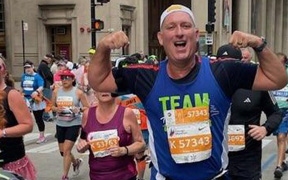Most people have heard of a knee or shoulder arthroscopy but are not aware of an ankle arthroscopic procedure, which may be used to evaluate and treat some common ailments of the ankle. Surgical arthroscopy may be useful in diagnosing and treating disorders of the ankle joint in order to help you get back on your feet and get on with your life.
Ankle Conditions Treated by Ankle Arthroscopy
There are many ankle related problems that can be treated with arthroscopic technology, including:
Ankle Arthritis: Ankle arthroscopy is used to perform a fusion surgery for many patients with end-stage ankle arthritis, with results better than open surgery.
Ankle Fractures: Fracture repair to realign bone and cartilage uses ankle arthroscopic procedure along with open techniques. Ankle Arthroscope is used to look for cartilage injuries inside the ankle.
Ankle Instability: Arthroscopic techniques can be used to tighten the ligaments in the ankle region for stability and support. When ligaments of the ankle become over-stretched, it may seem like the ankle will give way.
Anterior Ankle Impingement: Inflammation of the bone or surrounding soft tissue in the ankle causes ankle impingement. Patients will experience ankle pain, swelling, inability to walk uphill, and to bend the ankle. Bone spurs or osteophytes will be seen on X-rays. Ankle arthroscopy can be used to shave away bone spur growth and inflamed tissues.
Arthrofibrosis: Arthrofibrosis occurs when scar tissue can form within the ankle. Ankle arthroscopy can be used to identify and remove the scar tissue.
Infection: When there is infection in the joint space, antibiotics alone may not do the job, it requires an urgent arthroscopic surgery to wash out the joint.
Loose Bodies: Loose bodies of cartilage, bone and scar tissue that are free floating in the joint can cause painful problems, with clicking and catching. The ankle joint may lock up too. Ankle arthroscopy can help locate and remove the loose bodies.
Osteochondral defect (OCD): Fractures and sprains in the ankle region cause damage to cartilage and bone in the area leading to OCD. Patients experience pain, ankle swelling, clicking in the ankle. For OCD patients, arthroscopic surgery involves scraping away the damaged cartilage and drilling small holes in the bone to promote natural healing. There may be bone grafting and cartilage transplant needed along with arthroscopy.
Posterior ankle impingement: There may be inflammation of the soft tissue at the back of the ankle, which makes pointing the foot down painful. This is quite a common injury among dancers and it can be associated with an extra bone called antrigonum. Arthroscopy helps remove the problem tissue.
Synovitis: The soft synovial tissue lining can become inflamed causing severe pain and swelling. Synovitis can occur due to sudden injury, overuse, RA and osteoarthritis too. Ankle arthroscopy can be used to surgically remove non-responsive inflamed tissue.
Unexplained Ankle Symptoms: There are symptoms that patients often develop which cannot be explained by any other traditional diagnostic techniques. Surgeons will perform arthroscopy to look directly into the joint in order to correctly identify the problem, so that surgery can be performed.
Is Ankle Arthroscopy the Best Treatment for Ankle Arthritis?
Ankle Arthroscopy is frequently performed as an outpatient procedure with a few small incisions, resulting in reduced pain and fewer issues with wound healing. But this procedure may not benefit some patients with severe ankle arthritis. You may not be an appropriate surgical candidate if there are any active infections present or you suffer from some other medical problems.
The best way to know if you are good surgical candidate for ankle arthroscopy is to speak with your physician.
General Details of Ankle Arthroscopic Procedure
The operative leg is marked by the surgeon prior to surgery.
The patient is taken to the operating room and given anesthesia.
A tourniquet is applied to the leg and cleaned. The surgeon may use a device to “stretch” the ankle joint so that it easier to see during surgery.
Small incisions are made in the front and/or back of the ankle, which become the entry sites into the ankle for the arthroscopic camera and instruments.
Sterile fluid is passed into the joint to expand it for better visualization. The camera and instruments are often inserted through different incisions to perform the surgery.
After the surgery is complete, the incisions are sutured up. A sterile dressing is placed over the sutures.
A splint or boot may be recommended.
Ankle Arthroscopy Recovery
There will be some pain and swelling following surgery and the leg has to be kept elevated. Depending on the kind of surgery performed, you may not be able to walk on the leg immediately and it may take several months for full rehabilitation.
Sutures can be removed one to two weeks after surgery, if needed. And your surgeon will determine when activities and physical therapy can be allowed.
Many orthopedic surgeons will recommend physical therapy for quicker healing. Typically, the first few physical therapy sessions after surgery will look to control the pain and swelling from the surgery, using crutches and walking safety. With progression of time, physical therapy will include activities that
- Improve ankle range of motion (ROM)
- Increase ankle strength
- Recover balance and proprioception
- Advance exercise tolerance
- Maintain hip and knee ROM
With proper physical therapy regimens all patients can make a quick return to everyday and physical activities.
If you have any ankle pain or questions about ankle arthroscopy, contact an orthopedic specialists at IBJI.
*This content is for information only and is not intended to replace the diagnosis, treatment, or medical advice from your treating healthcare professionals. The content does not provide medical advice, does not constitute the practice of medicine or other healthcare professional services, and does not create a doctor-patient relationship. You should not rely on this information as a substitute, nor does it replace professional medical advice, diagnosis, or treatment. If you have concerns or questions, seek the advice of your healthcare professionals. If you think you may have a medical emergency, call your doctor or 911 immediately. Do not rely on electronic communications or communicate through this website for immediate, urgent medical needs. This website is not designed to facilitate medical emergencies. The use of the information is at the reader’s own risk. The links are provided for information and convenience only. We cannot accept responsibility for the sites linked or the information found here. A link does not imply an endorsement of a site.




